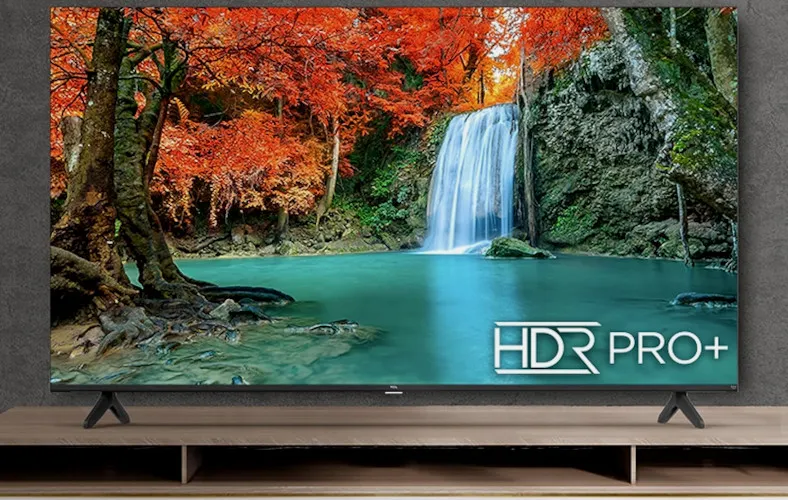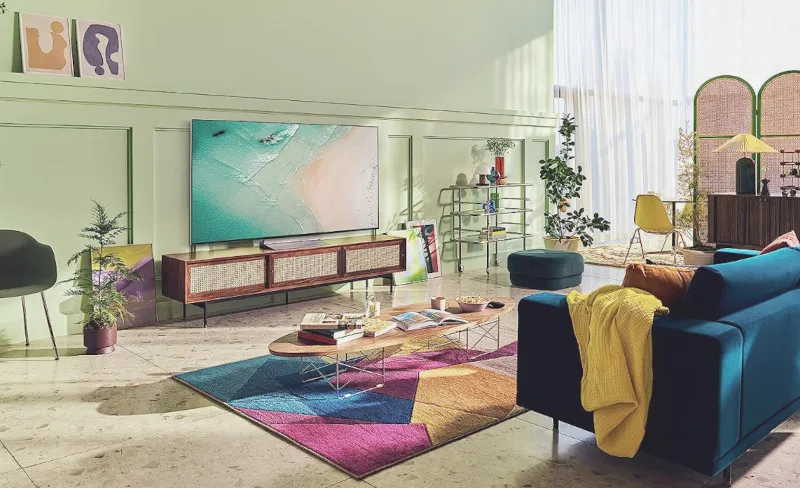If you’re like me, you’ve probably found yourself standing in the electronics section of a store, staring at a wall of TVs and wondering, “What on earth is the difference between QLED and OLED?” These terms get thrown around often, especially when looking for a new TV or monitor. They’re touted as the pinnacle of display technology, but what does that mean for the average person like you and me?
In this article, I will break down the nitty-gritty of QLED and OLED. We’ll delve into what these acronyms stand for, how they work, and, most importantly, what sets them apart. By the end of our journey, you’ll be armed with the knowledge to make an informed decision on which type of display is the best fit for your needs.
What is QLED?
QLED stands for Quantum Dot Light Emitting Diode. Sounds like something out of a sci-fi novel, right? But in reality, it’s a technology that uses tiny particles called quantum dots to enhance brightness and color. Imagine these quantum dots as little conductors, orchestrating a symphony of light that dances across the screen.
One of the big wins for QLED is brightness. If you’ve got a room bathed in sunlight and are worried about glare, QLED has your back. These TVs can get incredibly bright, ensuring your favorite shows and movies shine through, even on the sunniest days.

Color accuracy is another feather in QLED’s cap. The quantum dots work their magic to produce a wide range of colors, making everything from lush jungles to deep oceans pop with realism. It’s like having a front-row seat to the world’s wonders, all from the comfort of your couch.
But, just like OLED, QLED isn’t without its quirks. The black levels and contrast aren’t as deep and rich as OLED. It’s like having a delicious chocolate cake that doesn’t have that extra layer of gooey fudge in the middle. Also, the viewing angles can be a bit hit or miss, so the sweet spot for watching is a bit narrower.
Regarding lifespan, QLEDs are like the tortoises in the race – slow and steady. They don’t suffer from burn-in like OLEDs and tend to keep their cool (and color) for many binge-watching sessions.
What is OLED?
OLED screens comprise tiny organic compounds that light up when electricity zaps through them. Imagine millions of these little guys working together to create vibrant colors and deep blacks on your screen. It’s like a grand orchestra, but they produce stunning visuals instead of music.
One of the coolest things about OLED is that each of these tiny compounds emits its light. This means they can be turned on and off individually. Remember when you’ve been annoyed by the backlight on your TV not matching up with the action on screen?

Well, with OLED, that’s a problem of the past. When it needs to be black, it’s pitch black, giving you those perfect, deep, dark scenes that make movie nights magical.
Now, let’s talk perks. OLEDs are known for their superior black levels and contrast. It’s like the universe decided to pack all the stars into your living room every time you turn on an OLED TV. The colors are vibrant, and the viewing angles are top-notch. No more “bad seats” in the house!
But, of course, no technology is without its quirks. OLEDs can be a bit pricey, and there’s this thing called “burn-in” that can happen if static images stay on the screen too long. Also, while they’re energy-efficient, their lifespan can be shorter than their QLED cousins – but we’ll get to QLED in a moment.
Comparison of QLED and OLED
A. Picture Quality
First, let’s talk about picture quality because, let’s face it, who doesn’t want a TV that makes your favorite movies and shows look like masterpieces? OLED comes out swinging with its knockout black levels and contrast. Remember those organic compounds I mentioned? They ensure that when a pixel is off, it’s OFF, giving you blacks as deep as a moonless night.
QLED, on the other hand, is the bright spark in this contest. It’s like the sun to OLED’s moon. The quantum dots ensure that colors are bright and pop with a vibrancy that can make your viewing experience feel almost 3D.
B. Durability and Lifespan
Now, let’s get into the nitty-gritty of durability and lifespan. OLEDs are like that flashy sports car – stunning and fast but can be a bit high maintenance. There’s the risk of burn-in, especially if you’re like me and have those favorite channels or games that are always on the screen.
QLEDs are more like the reliable family SUV. They might not have the same contrast level, but they’re built to last. Burn-in? QLEDs don’t know her. They’re in it for the long haul, ready to deliver consistent performance year after year.
C. Cost and Affordability
Ah, the million-dollar question – or hopefully, not that much! Cost and affordability are where things get real. With their light-emitting cells and superior contrast, OLEDs tend to come with a heftier price tag. It’s like paying a premium for a gourmet meal – the experience is unforgettable, but your wallet might feel the pinch.
QLEDs, while not exactly cheap, are generally more wallet-friendly. They offer a middle ground where you’re still getting fantastic picture quality without smashing the piggy bank.
D. Variety and Availability
In terms of variety and availability, QLED takes the cake. There are more models, sizes, and price ranges to choose from. It’s like walking into a candy store with endless options. OLEDs, while growing in variety, are still playing a bit of catch-up.
So, where does this leave us? OLED might be the way to go if you’re after the ultimate picture quality and are prepared to pamper your TV. But if you’re looking for something that balances cost, durability, and picture quality and shines bright in well-lit rooms, QLED could be your champion.
Stay with me because next, we’re exploring the best scenarios to use each type of TV. It’s like matchmaking but for your living room and viewing habits!
Best Scenarios to Use OLED
Home Theaters
If you’re a movie buff like me and have a dedicated space where you want to recreate that cinematic magic, OLED is your co-star. In a dark room, those deep blacks and rich colors come alive. Every scene is a visual sonnet, every moment an intimate dance of light and shadow.
It’s like having a private cinema where every screening is a premiere.
Creative Professional Monitors
For my creative comrades – the photographers, videographers, and digital artists – OLED is like a trusted palette. The color accuracy, the contrast, it’s a canvas where your creations come to life in all their authentic glory. It’s not just a display; it’s a partner in your artistic journey.
Best Scenarios to Use QLED
Bright Rooms
Now, if your living room is a sun-kissed space where light pours in generously, QLED is your ally. It stands tall against the brightest of lights, ensuring that your visuals are always clear, always vibrant. It’s like having a shield that guards your viewing experience against the invasion of external light.
General TV Watching
For the everyday viewer, the one who seeks a reliable companion for the daily dose of entertainment, QLED is a steadfast friend. It’s versatile, durable, and offers a visual experience that’s delightful without being overly extravagant.
It’s the everyday hero that makes every moment in front of the TV a special occasion.
Which is Better: QLED vs OLED?
The Case for OLED
Let’s start with OLED. If you’re a cinema lover, a gamer, or simply someone who appreciates the finer things in life, OLED might steal your heart. Those deep blacks, rich colors, and wide viewing angles are hard to resist. It’s like having a personal IMAX theatre in your living room.
Every scene is a visual symphony, every color a masterpiece painted before your eyes. It’s the choice for those who want the ultimate viewing experience and are willing to pay the premium.
The Case for QLED
Now, let’s swing the spotlight over to QLED. It’s the pragmatic choice, the middle ground where performance and affordability meet. If you’ve got a bright room, or you’re just someone who appreciates a good deal without compromising too much on quality, QLED is calling your name.
It’s reliable and durable, and those quantum dots ensure your viewing experience is still something to write home about. The workhorse consistently delivers a blend of performance and value.
The Verdict
So, who wins the crown in the QLED vs OLED showdown? Well, it’s less of a competition and more of a personal choice. It’s like choosing between a sleek sports car and a reliable SUV. Both have their merits, their strengths, and weaknesses. The winner? Well, that depends on you.
OLED is your champion if you’re after unparalleled picture quality, have a controlled lighting environment, and are okay with the price tag. But if you’re looking for something bright, colorful, durable, and more budget-friendly, QLED is waving at you from the winner’s podium.
Conclusion
We’ve journeyed through the mystical lands of OLED and QLED, unraveling their secrets and unveiling their strengths and weaknesses. It’s been a ride. We’ve stared into the inky blacks of OLED and basked in the brilliant brightness of QLED. Each has spun its enchanting tale, and if you’re anything like me, you’ve probably fallen slightly in love with both.
In the OLED corner, we have the maestro of deep blacks and stunning contrasts, a technology that makes every frame a work of art, every color a stroke of genius. It’s the choice for the connoisseurs, the purists, and those who want their visuals to be a soul-stirring experience.
Then, in the QLED corner, we have the bright spark, the reliable performer that brings a world of color and clarity, even in the brightest of rooms. It’s the everyman’s champion, offering a blend of performance, durability, and value that’s hard to resist.
Frequently Asked Questions
Can OLED TVs suffer from burn-in?
Yes, OLED TVs can experience burn-in, but it’s not as common as you might think. It can happen when static images are displayed for extended periods. But with regular use and taking precautions like not pausing the screen on a single image for too long, you should be golden.
Is QLED better for bright rooms?
Absolutely! QLED TVs are like the superheroes of bright rooms. Thanks to those nifty quantum dots, QLEDs can achieve higher brightness levels, making them a solid choice if your room is often bathed in sunlight.
Can I play games on both QLED and OLED TVs?
Both OLED and QLED TVs are gamers’ delights. OLEDs offer fantastic response times and motion clarity, while QLEDs impress with brightness and color vibrancy. It’s like choosing between two epic gaming arenas!






